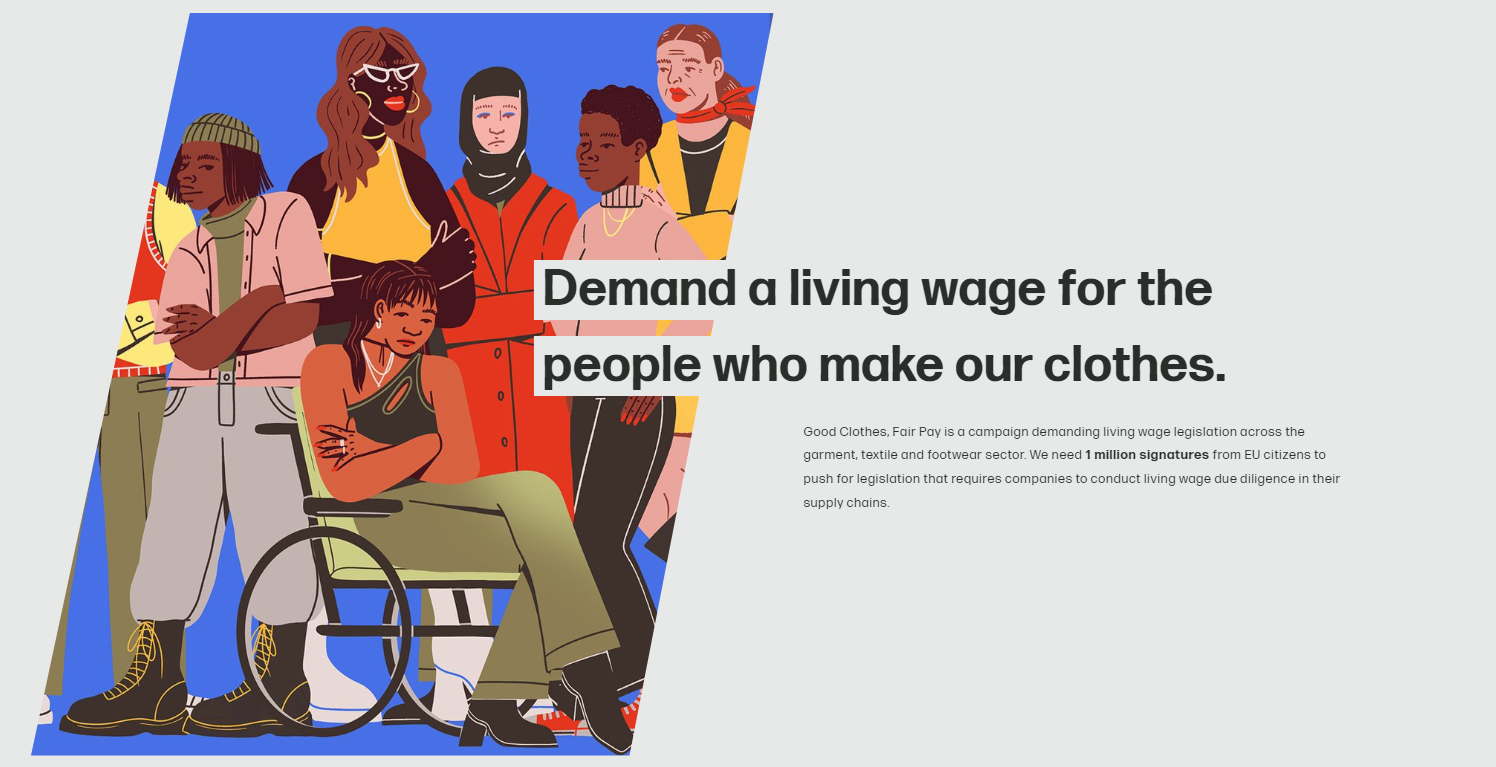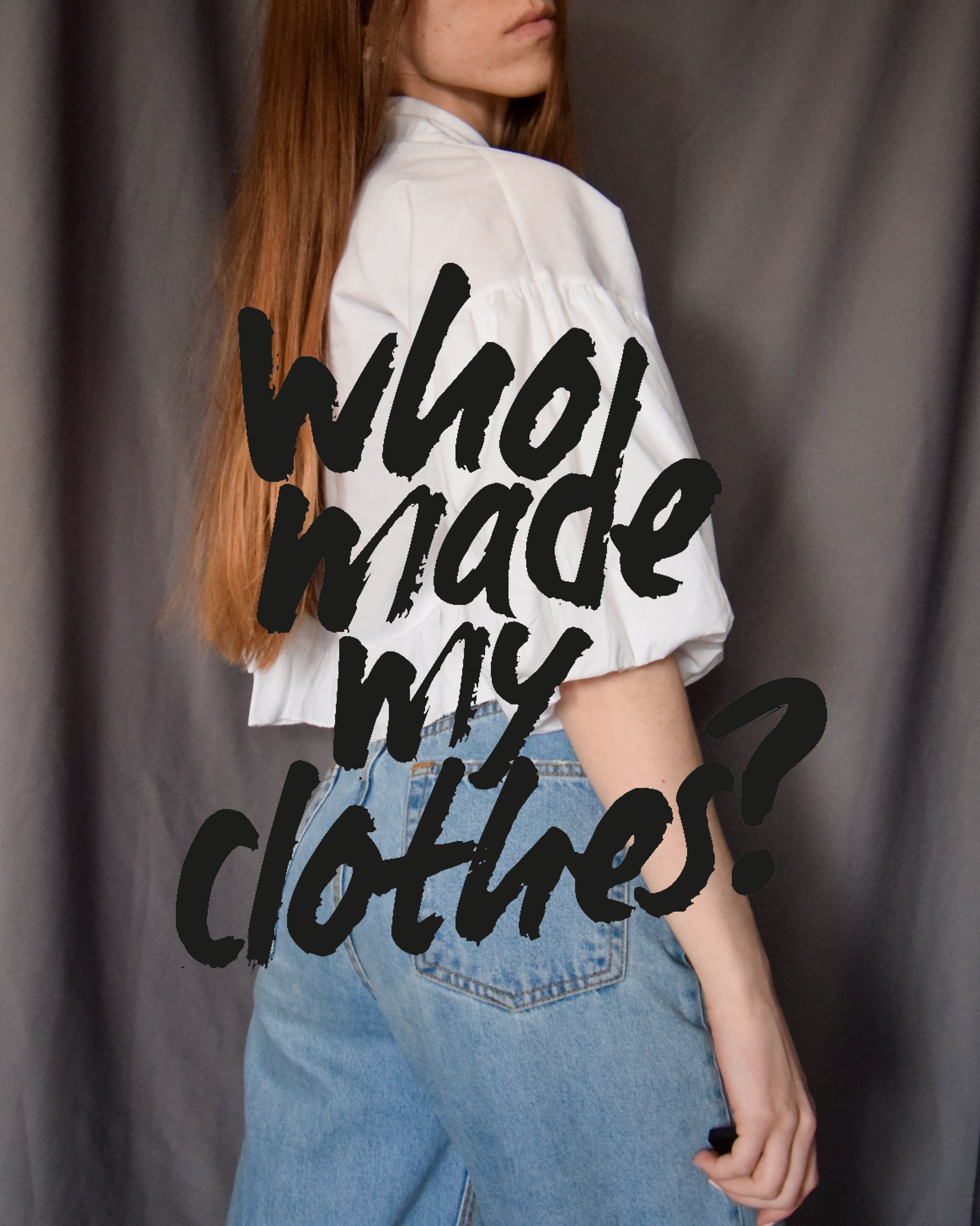5 simple things you can do online to make fashion more sustainable
Making fashion more sustainable has a lot of different aspects to it. If you’ve already assessed your wardrobe, reduced your consumption, and swapped to second hand where possible, you might be wondering how else you can get involved in making a change.
The following five tips are specifically ways you can get involved online to make fashion more sustainable. Most of these can be done from the comfort of your home with very little energy needed to make a difference.
1. Follow sustainable fashion social media accounts
Following some sustainability focussed accounts on whichever social media platforms you use is a super easy action and it means you get some more content on your feed. But how does following sustainable accounts help you to make fashion more sustainable?
Fashion Revolution are one of the organisations at the centre of the sustainability conversation.
Their work includes the Fashion Transparancy Index, Fashion Revolution Week, education and local events run by volunteers.
First of all you get exposure to more information on sustainability than you might normally. Infographics, definitions of key words like greenwashing, recent research, promotions of more sustainable brands, petitions you can sign, and more will show up on your feed. By taking in even a fraction of this information you are learning more about the cause - and you can share this knowledge with people you know.
Venetia La Manna is a creator who makes a range of content including her recipes for fast fashion brands.
She shares relevant news, campaigns, actions you can participate in, and her tips and experience with slower fashion and the associated lifestyle.
Interacting with this type of content means the various algorithms will push each story, post, or reel to more people. This means that even more users will be able to see sustainability related content.
I made the below video (all the way back in 2020) sharing some accounts I’d recommend following on Instagram. If you’re looking for a starting point it’s not a bad one. It focusses mostly on organisations rather than specific influencers. If the latter is more your jam, then Ethical Influencers is a good starting point as they have a whole directory of people that make content around sustainability - as an FYI, I’m in there!
But there’s no point in following these accounts if you don’t resonate with them on some level. So try out different styles of content based on your personal preferences and what you want to see on a daily or weekly basis.
2. Sign petitions
Signing petitions is something quick and simple that has the chance of making a massive impact. Over the last couple of years it definitely felt like there has been a petition for basically everything. But the ones that made the biggest difference had hundreds of thousands of signatures and many communities rallying behind the cause.
So how do you find the meaningful petitions with the best chance of making an impact?
Since you’re now following some sustainability focussed accounts on whichever platform you use (be that Instagram, Twitter, TikTok, or even email newsletters) you’re already halfway there.
The Good Clothes Fair Pay campaign is currently running with 1,000,000 signatures needed from EU citizens to get legislation forcing brands to pay all garment workers in their supply chains fairly.
The sustainability focussed community band together fairly often and share resources far and wide. If you’re paying attention to the posts, stories, and videos shared there’s a good chance you’ll see petitions as they pop up.
All you need to do at that point is sign them and share them!
3. Join social media activism
Social media activism is not exactly new but it’s been making big changes. With news of brands refusing to sign safety accords for the garment workers in their supply chains or refusing to even pay their workers, targeted campaigns are set up to force change.
Missguided are one of the recent targets of the sustainable fashion community.
For weeks people have been flooding their comments with the dedicated tag #missguidedmustpay which puts pressure on them by affecting their customer base and effectiveness of marketing.
This activism isn’t limited to comments. Actions to put pressure on brands include sending emails to flood the inboxes of brands and specific employees, tagging brands and relevant people on social media to spread awareness, making a hashtag trend to raise further awareness among the general public, and more.
Most of these actions take less than a minute to get involved in and brands have been successfully pressured into paying the workers in their supply chain and signing the relevant safety accords. More intensive actions such as making media for a campaign is a way to reach a new or wider audience as well as a way to express some of your creativity if that’s something that appeals to you.
4. Share resources
Sharing an Instagram post to your story takes under ten seconds and means you could teach someone something new super easily. Retweeting a post on Twitter takes one click and means your audience might decide to learn more about sustainability and slow fashion. Sending your friends and family a video could get them to rethink their perspective on how much they consume.
The act of sharing, specifically when the content resonates with you, is often really simple and could affect more people than you know. Even getting one person to learn more about the negative effects of fast fashion could help result in more conscious decisions and incremental change.
5. Take part in community events
The pandemic made online events a lot more accessible through necessity. This means that there are more events than ever to get involved in. It’s just a matter of finding them and signing up.
I got started with upcycling and sewing through online tutorials.
Taking part in events like masterclasses and workshops can help you learn new skills, meet new people, and contribute to wider change.
Things you can get involved in include:
online workshops e.g. mending, upcycling
lectures, panels, and discussions
virtual clothing swaps
book clubs
fundraisers for causes and organisations
This particular category is not one of my personal strengths and I’ve mostly been relying on accounts that I follow sharing relevant events BUT a quick online search brings up loads of results!
Places to check out for online events:
UN Alliance for sustainable fashion
The sustainable fashion collective
Business of Fashion, Textiles and Technology
And if none of these sites or your own searches match what you’re looking for, you could always host your own event to fill that gap!
Final Thoughts
There are a wide range of ways to get involved with sustainable fashion online, even beyond this list of five. Information, events, and lots of people in the community are out there. The main thing you need is the motivation and time to find them!







